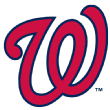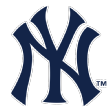One thing you don't generally get from a major league season is a true Cinderella story, or at least not any more. Certainly, there are some such tales littered in the annals of baseball history, such as the 1914 Braves or the 1969 Mets or the 1991 Twins. Those clubs launched themselves from cellar-dweller status, or something close to it, all the way to the sport's pinnacle in one season.
Now, though, and perhaps this is an unfortunate outcome from the rise of analytics and probabilistic forecasting, it's hard to envision a championship team that we flat out did not see coming. We do sometimes get a surprise postseason entrant, usually a rebuilding team that turns the corner quicker than anticipated. But we haven't had what we'd really paint as a Cinderella champion since the Twins beat the Braves in 1991's classic World Series.
Generally speaking, teams forecast to be elite turn out to be at least pretty good, and teams forecast to end up at the bottom turn out to be pretty bad. The probabilities we establish -- based on rosters as they stand when we enter a season -- hold up over 162 games. And while the 10-team playoff format is generous, it does mostly rule out a true Cinderella-interloper sneaking onto an October bracket.
The 2020 season is different than any before it for a lot of reasons, but this is yet another: The possibility of a true rags-to-riches club crashing the postseason party looms larger than usual. And perhaps that is about the best thing we can say about this uncertain campaign -- that anything can happen.
Before the season -- the original season we thought we were getting back in mid-February -- my system identified six teams that had at least a two-in-three shot at the playoffs, and at least a 5% chance of winning the World Series. Those elite teams were the Yankees, Dodgers, Astros, Twins, Nationals and Braves. Conversely, there were seven teams that had a 2% or lower shot at the playoffs and a zero (or near-zero) chance at winning it all: Pirates, Giants, Royals, Mariners, Tigers, Marlins and Orioles.
Those tiers began to blur once the 60-game schedule was settled upon. They blurred further when -- just as the season started -- the playoff format was expanded from 10 to 16 teams. And they have continued to blur each night, as each game is booked, carrying with it 2.7 times the usual degree of impact as a regular-season game from any other season.
The difference in where we started to where we've gone can be illustrated by four measurements:
PROBABILITY FOR ELITE-TIER TEAM TO REACH THE PLAYOFFS
162-game, 10-team format: 84 out of 100
60-game, 16-team format: 88 out of 100
PROBABILITY FOR BOTTOM-TIER TEAM TO REACH THE PLAYOFFS
162-game, 10-team format: <1 in 100
60-game, 16-team format: 16 in 100
The format in place for the 2020 season accomplishes two things. While the abbreviated schedule introduces an unprecedented level of randomness into the equation, the expanded playoff format actually improves the outlook for elite teams to at least qualify for the postseason. A rash of injuries or infections might sink such a team from the top of the league to the middle, but chances are it won't drop all the way below eighth and thus end up out of the October mix.
At the same time, the short schedule and the generous playoff bracket combine to raise hopes for every non-elite team. That includes those who in the original context of the season were almost objectively hopeless.
Another thing to file away about teams in these groups, because it's possible there could be one or two matchups between clubs from these tiers in October: If MLB sensibly adopts a bubble format for the playoffs, then the higher seed might receive no tangible benefit, as home-field advantage would not exist in any form beyond the privilege of batting last. Those best-of-three, first-round pairings would be the finest example of baseball chaos we've seen yet.
Now that some teams have already booked a third of their games, hopes have been bolstered even more for some upstarts because of their early success, which we would dismiss in a normal season. Largely this is because, as mentioned, in a short season full of variance, it's much easier for a poor team to rise from the bottom to the middle than from the bottom to the top, and in 2020, the middle allows you to play into October.
Let's dig into these two tiers by ranking teams within them in two ways. Which bottom-tier teams look most likely to sneak into October? And which elite teams are most likely to slip out of the picture altogether?
Which bottom-tier teams might sneak in?
(These teams had a 0% chance at winning the World Series under the original 162-game, 10-team playoff format; current chances of making playoffs are noted)
 1. Baltimore Orioles (39% chance to get into 16-team playoffs)
1. Baltimore Orioles (39% chance to get into 16-team playoffs)
The Orioles have mashed their way to a 119 team OPS+ and have outscored opponents by eight runs through one-fifth of their schedule. Their 10-7 record doesn't include a 5-2 lead they hold in a suspended game against Washington from Aug. 9 that has already reached the sixth inning. In these newest simulations, a 30-30 mark in both leagues, on average, lands the final wild-card spot. If you book that suspended game in favor of Baltimore, they'd need to go 19-23 the rest of the way to get there. Unfortunately, the O's have eight games left against the Yankees, three with the Nationals beyond the suspension, seven with Tampa Bay and three against Atlanta. So even if the .900-plus OPS marks of household names such as Renato Nunez, Hanser Alberto, Jose Iglesias and Pedro Severino hold up, it's still a tough road ahead for Baltimore.
 2. Kansas City Royals (29%)
2. Kansas City Royals (29%)
The Royals are currently in last place in the AL Central, and even in 2020, last place won't get you into October. (But fourth place might.) However, Kansas City has won five of six after a 3-10 start, and in 2020, a couple of hot streaks like that keep you going. The Royals' roster has gotten stronger as the season has progressed. Underrated Hunter Dozier has helped stabilize the lineup since returning after testing positive for COVID-19. The rotation has added top prospects Brady Singer and Kris Bubic, while Brad Keller also has returned from the COVID-19 list, and that trio has joined Danny Duffy and Jakob Junis in a suddenly stable rotation. The high-leverage portion of the bullpen has fallen into a nice pecking order, led by dynamic righty Josh Staumont. Over 162 games, forget about it. Over 60 games when a 29-31 record and fourth-place finish might earn you a date with the Yankees in the first round? Entirely possible.
 3. Miami Marlins (25%)
3. Miami Marlins (25%)
The Marlins have won two out of every three games they've played so far. But they haven't played very many games. What's more, because of their teamwide COVID-19 outbreak and the high-flux nature of their roster anyway, it's impossible to know if this is a breakout or total and complete randomness. Only the Cardinals have played fewer games. And yet the Marlins have deployed the most pitchers (27) and total players (45) in the majors. It's staggering. Of those 27 hurlers, the innings leader is Pablo Lopez with 10. The Marlins' 112 team ERA+ is a solid seventh in the NL -- but how could we possibly know if that's a sustainable number when it's a product of crowd-sourcing?
 4. Detroit Tigers (13%)
4. Detroit Tigers (13%)
The Tigers sit second in the AL Central, but they remain held back by my system, which just doesn't think this team is very good. Detroit's offense has been succeeding with a long-ball rate that doesn't seem sustainable, but, then again, when you're only facing nine other teams in a season, maybe it's just a matter of a weird number of matchups that favor them. That's a factor in a season like this that might not be discussed enough. The Detroit rotation ranks last in the majors with an unsightly 6.78 ERA, but the good news is that even if it really is the worst starting staff in the majors, it's almost certainly not bad to that degree. And in young pitchers such as Casey Mize, there could be help on the way.
 5. San Francisco Giants (6%)
5. San Francisco Giants (6%)
The Giants' path to October in the simulations is inhibited by sharing a division with their good friends in Chavez Ravine. The Giants and Pirates were the only two teams that failed to win a single division title out of 10,000 runs of the remaining schedule. The Giants' best hope for a surprise run is probably for Gabe Kapler to ride his veterans and hope that Donovan Solano can keep hitting like Willie Mays and Mike Yastrzemski can keep hitting like, well, Carl Yastrzemski. In other words, it's hard to look at the San Francisco player pool and see where there might be a surprise jolt to the roster.
 6. Seattle Mariners (2%)
6. Seattle Mariners (2%)
Kyle Lewis is fun to watch, and Kyle Seager is having a resurgent campaign, and J.P. Crawford seems to have reached a new level, and Dylan Moore looks like another second-chance success story. In other words, it's easy to check in on the Mariners now and again and think that they should not be this bad. But Seattle has a 91 team OPS+, an ERA+ of 74 that is firmly in 30th place and an MLB-worst run differential. Only the Mariners and the team after them in these rankings failed to eke out at least one World Series win in the latest run of 10,000 simulations.
 7. Pittsburgh Pirates (0.3%)
7. Pittsburgh Pirates (0.3%)
Way back when the original spring training opened, and the Pirates' rotation depth chart still included Jameson Taillon and Chris Archer, the Bucs looked more like lower middle class than bottom tier. However, with a thinning depth chart, a 3-13 record and a rough remaining schedule, the Pirates remarkably made the playoffs in just 28 of 10,000 simulations. Pittsburgh would need to go 27-17 to get back to .500, and that just does not seem likely to happen.
Which elite teams might fall out?
(These teams that had at least a 5% chance of winning the World Series under the original 162-game, 10-team playoff format; current chances of missing playoffs are noted)
 1. Washington Nationals (43% chance of missing 16-team playoff)
1. Washington Nationals (43% chance of missing 16-team playoff)
As mentioned, the chance that an elite team would slip out of the playoffs is lower than the chance of a bottom team sneaking in because of the enlarged playoff format. So even though the Nationals easily take the top spot here, keep in mind that a 43% chance of missing the playoffs still means Washington has a 57% chance of getting in. Clearly it's been an uneven start for the champs, but now Juan Soto is back, and the offense already makes much more sense. If Stephen Strasburg gets up to speed soon, he'll have the same effect on the rotation.
 2. Houston Astros (18%)
2. Houston Astros (18%)
The Astros have not gotten off to a strong start, and if you were just noticing that, you would be surprised about the reason. (Well, maybe not.) Houston has every reason to think they'll go back to bludgeoning teams with an offense led by Jose Altuve, George Springer and Alex Bregman. So far, it simply has not happened. The good news is that Dusty Baker has been able to piece together a workable pitching staff full of unfamiliar names. If the pitching holds up until the big bats get going and Justin Verlander gets back, Houston could enter October once again as a leading World Series favorite. But as you can see by this number, the Astros are in a more tenuous position than they've been in for a long while.
 3. Atlanta Braves (8%)
3. Atlanta Braves (8%)
With the Braves, we start to get into the group of elite teams that still look elite, though there is a clear separation right now between Atlanta and the teams that follow. The quest to replace Josh Donaldson at third base with Austin Riley and Johan Camargo has fallen short so far. More importantly, an Atlanta rotation staggered by injuries and disappointing performance does not look championship worthy. Atlanta remains an overwhelming favorite to play into October. But they have work to do in order to improve their outlook for what happens after they get there.
 4. Minnesota Twins (2%)
4. Minnesota Twins (2%)
After a solid start, the Twins' bullpen has been struggling, and after Minnesota looked poised to run away with the AL Central, suddenly it looks like a free-for-all. Minnesota continues to have an elite homer-hitting offense, but the overall consistency of the attack hasn't been as good as it was in 2019. And while the rotation has been good, injuries have started to pile up in that area. (Thank goodness for Randy Dobnak.) Based on the very limited evidence of what we've seen thus far, it's the Oakland A's who look more like the top AL pennant threat to the Yankees, not the Astros or Twins. Still, the Twins already are a near lock for the playoffs and once there, well, it's 2020.
 5. Los Angeles Dodgers (0.4%)
5. Los Angeles Dodgers (0.4%)
Ever since the Dodgers landed Mookie Betts, there has been a little bit of back-and-forth at the top of the ratings between L.A. and the Yankees, but what has remained constant is that the Dodgers and Yankees have looked like the class of their respective leagues. The L.A. offense, particularly Cody Bellinger, hasn't hit its full stride, but the Dodgers' run prevention machine (MLB-best 189 ERA+) is already churning. Perhaps the best news of all is that Kenley Jansen has looked terrific so far, as opposing hitters have had almost no luck barreling him up.
 6. New York Yankees (0.4%)
6. New York Yankees (0.4%)
The Yankees have mostly looked as advertised, with an MLB-high 125 OPS+. They've put up that number even though Gary Sanchez and Gleyber Torres have hit a combined .135 over 104 at-bats and Giancarlo Stanton is on the IL. If James Paxton can get rolling and Aaron Judge's lower body can get un-tight and Aroldis Chapman comes back at full speed, the Yankees should ride a fairly soft remaining schedule to the AL's top seed.
Embrace the randomness
So what happens if, say, the Yankees really do hit their stride and the Royals really do overachieve their way to an 8-seed, and the teams are paired up for a best-of-three series in Milwaukee at the beginning of October? Two bad days for New York, and the Royals move on and the best Yankees team in quite awhile is done. All we can really do is celebrate the joys of small-sample baseball.
Before the season, when I plugged my player forecasts into anticipated depth charts and then simulated what I thought would be a 2,430-game schedule, there seemed to be some clear tiers in baseball at the top and the bottom, then a pretty large and blurry middle class. Those forecasts more or less dovetailed with the oddsmakers, so this wasn't an observation specific to my methods. Those tiers are reflected above.
The tiers still held up by the time we finally got around to Spring Training 2.0, though there had been some juggling related to major injuries to star pitchers such as Noah Syndergaard and Chris Sale, along with the decisions of a number of players, such as David Price and Buster Posey, to opt out of the season out of concern for the COVID-19 pandemic. When all of those developments were accounted for, the tiers remained fairly clear when the updated depth charts were plugged in to the original 162-game, 10-team postseason structure and simulations were run.
While we have a fairly good idea of who baseball's best and worst teams really are, this year that matters less than ever. If you're a passionate fan of the sport, one who doesn't necessarily lock into the same team every night, maybe you've picked up on a different vibe in the night-to-night unfolding of the young season.
Take Wednesday night (Aug. 12), when toward the 10 o'clock hour on the East Coast you had three compelling games hanging in doubt, all of which featured teams who entered our original conception of the 2020 season firmly in the don't-have-a-chance class.
There were the Blue Jays, playing in Buffalo of all places, hammering homers in seven straight innings while erasing an 8-0 deficit against the Marlins, who recovered to win in extra innings. There were the Orioles, fending off a late rally by the Phillies. And there were the Royals, who nearly blew a 5-0 lead only to escape with a one-run win at Cincinnati when closer Trevor Rosenthal escaped a jam he created by walking the bases full.
The wins lifted the respective marks of the Marlins, Orioles and Royals to 8-4, 9-7 and 8-11. Given what we thought we knew about those teams, in a normal season we'd shrug and perhaps would not have paid that much attention to those nail-biters at all. Now, though, every close game carries with it at least some hint of greater meaning.
This is the one gift that the skewed 2020 experiment has given us. We might as well enjoy it.
